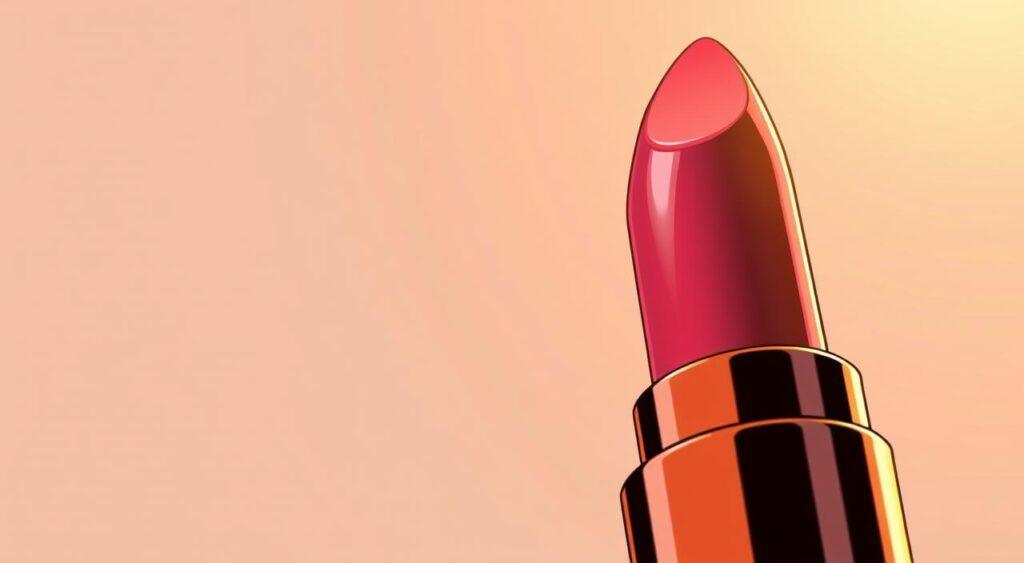Why do people splurge on small luxuries like lipstick or coffee when money is tight? The lipstick mental model sheds light on this. It shows how our minds drive us to spend, even when times are hard.
Leonard Lauder of Estée Lauder coined the term the lipstick effect after 9/11. It explains how small treats, like nail polish or streaming services, give us comfort. These small joys are our emotional anchors.
This idea comes from behavioral economics. It tells us we seek control and confidence when life is uncertain. Whether it’s the Great Depression or 2020 lockdowns, these small buys show our resilience.
They help us understand how we balance our emotional needs with what we can afford. Knowing this helps us make smarter spending choices. It shows how our habits are linked to deeper psychological needs.
At its core, this idea shows that humans don’t stop spending altogether under stress. Instead, they redirect funds toward affordable items that boost confidence or maintain normalcy.
How the Lipstick Mental Model Shapes Spending Habits
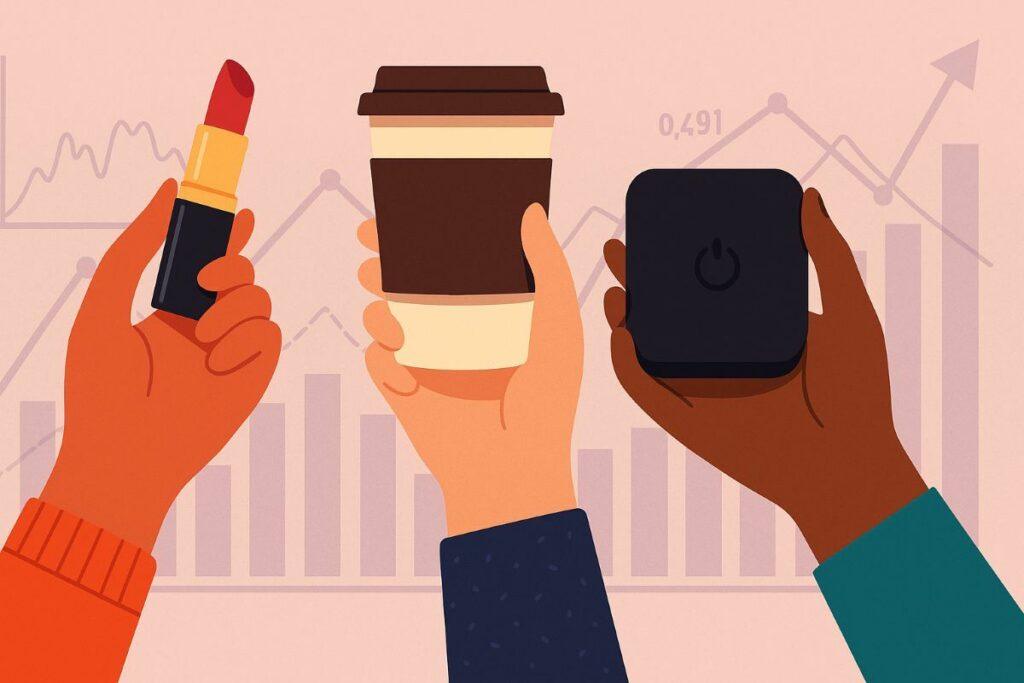
The lipstick mental model shows why people choose small, meaningful buys when times are tough. When money gets tight, people don’t stop spending. Instead, they look for things that bring emotional joy.
Behavioral economics helps us understand this. Small treats like a $10 lip gloss or a fancy coffee give us a sense of normalcy. For example, during the 2008 financial crisis, L’Oréal’s sales went up by 5.3%. On the other hand, big purchases like furniture dropped sharply.
This shows a deep human need to hold onto dignity and hope, even when big dreams seem far away.
This idea isn’t just about makeup. It’s about any affordable joy that brightens our day. Streaming services like Netflix grew during hard times, giving people a cheap way to escape.
Drugstore brands like Cetaphil also did well in 2020, as people focused on skincare at home. By understanding this, we can make better choices. Whether it’s a small self-care act or a product that touches our hearts, it’s all about finding joy in small things.
Key Takeaways
- Small indulgences often increase during financial stress to preserve emotional well-being
- This behavior dates back to the Great Depression and appears in modern recessions
- Lipstick mental model: Affordable luxuries act as psychological anchors during uncertainty
- The pattern extends beyond cosmetics to any emotionally meaningful purchase
- Recognizing this habit helps make intentional spending decisions
By understanding the lipstick mental model, we gain insight into human resilience. It’s not about logic—it’s about nurturing our spirit when challenges arise.
Introduction to the Lipstick Mental Model
Why do small purchases feel essential when budgets shrink? The answer lies in human psychology—our need for emotional anchors during uncertainty. Leonard Lauder of Estée Lauder first spotted this pattern when sales of affordable beauty items spiked after 9/11. His observation revealed a truth: people prioritize confidence and normalcy even in crises.
Defining the Concept
This model isn’t about makeup—it’s about how we redirect spending toward meaningful choices. When big investments feel risky, a $10 item becomes a tool for self-expression. Red shades, for instance, symbolize strength across cultures. Studies suggest choices like these shape how others perceive competence and individuality.
Overview of Consumer Behavior During Recessions
During downturns, sales of streaming services or premium coffee often rise. These aren’t random splurges—they’re calculated moves to preserve joy. Women especially lean into beauty routines as psychological armor. It’s a quiet rebellion against helplessness, proving that small luxuries carry outsized emotional weight.
Recognizing this pattern helps us spend with purpose. Instead of judging “frivolous” buys, we see them as investments in resilience. What tiny act of self-care keeps you grounded when life feels shaky?
The Origins and History Behind the Lipstick Effect
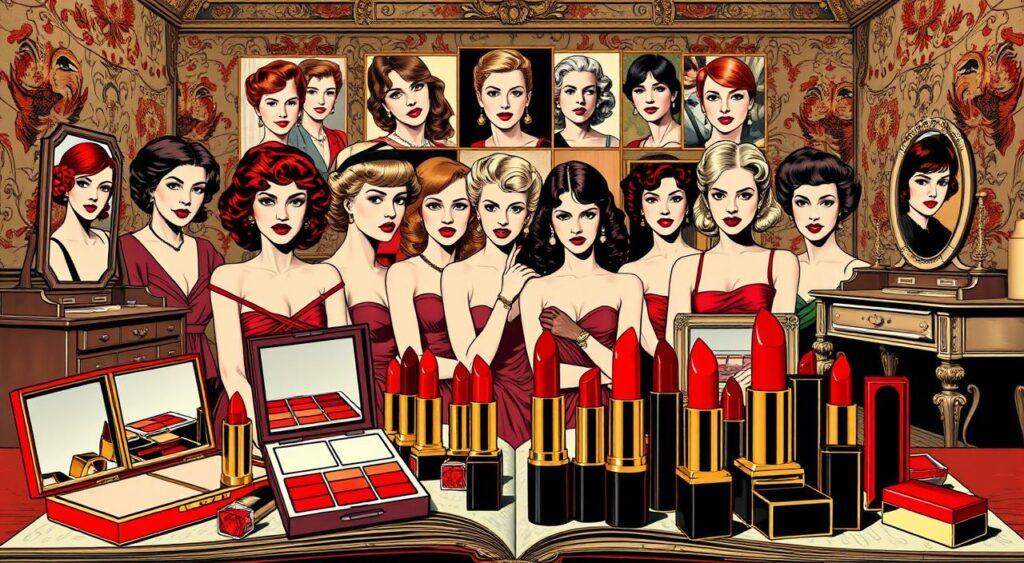
What connects ancient queens to modern recessions? The surprising story of red lipstick reveals how humans have long used small luxuries to weather storms. Leonard Lauder of Estée Lauder first named this pattern after 9/11, when sales of his company’s products jumped 11% despite economic chaos.
Leonard Lauder and the Estée Lauder Breakthrough
Lauder’s 2001 observation wasn’t just about makeup. It showed how people cling to familiar rituals during upheaval. His data proved something counterintuitive: affordable beauty items thrive when bigger purchases stall. This “lipstick effect” became a roadmap for businesses navigating uncertainty.
Historical Trends from 9/11 to the Great Depression
Centuries before Lauder’s discovery, red pigments symbolized power. Cleopatra used them to command attention. In the 1920s, women wore crimson lips to defy societal limits—a silent protest against rigid norms.
World War II transformed red lipstick into a tool of resilience. Factories handed tubes to female workers as morale boosters. Even during the Great Depression, cosmetic sales defied logic, rising while other industries collapsed.
These patterns share a thread: when the world feels unstable, people invest in visible confidence. A $10 tube becomes armor against helplessness. What small act of boldness helps you face uncertainty?
Economic Impact on Beauty Spending
How do recessions reshape spending habits in unexpected ways? History shows people don’t abandon self-care during crises—they redefine it. Three major economic events reveal how beauty budgets adapt under pressure.
Case Studies: 2001 Recession and 2008 Financial Crisis
When markets crashed in 2008, L’Oréal defied logic with 5.3% sales growth. Research from this period found unemployment rates directly influenced spending shifts. For every 1% job loss, furniture sales dropped 3% while cosmetics rose 2%. Men reduced non-essential purchases too—but unlike women, they didn’t redirect funds to grooming products.
| Year | Economic Event | Key Beauty Trend | Sales Impact |
|---|---|---|---|
| 2001 | Post-9/11 Recession | Affordable lip colors | +11% Estée Lauder |
| 2008 | Global Financial Crisis | Nail polish & self-care kits | +5.3% L’Oréal |
| 2020 | COVID-19 Lockdowns | DIY skincare routines | -8% luxury beauty, +23% drugstore brands |
Trends During the 2020 COVID-19 Lockdowns
The pandemic rewrote the rules. With masks hiding lips, sales shifted to eye makeup and at-home peels. A 2020 study revealed 68% of women maintained skincare rituals as psychological anchors during isolation. Budget-friendly brands like Cetaphil saw record demand—proving crisis spending prioritizes both price and emotional value.
These patterns show our resilience. When big comforts vanish, we cling to small acts of care. What affordable ritual helps you feel grounded today?
Understanding the Lipstick Mental Model in Consumer Psychology
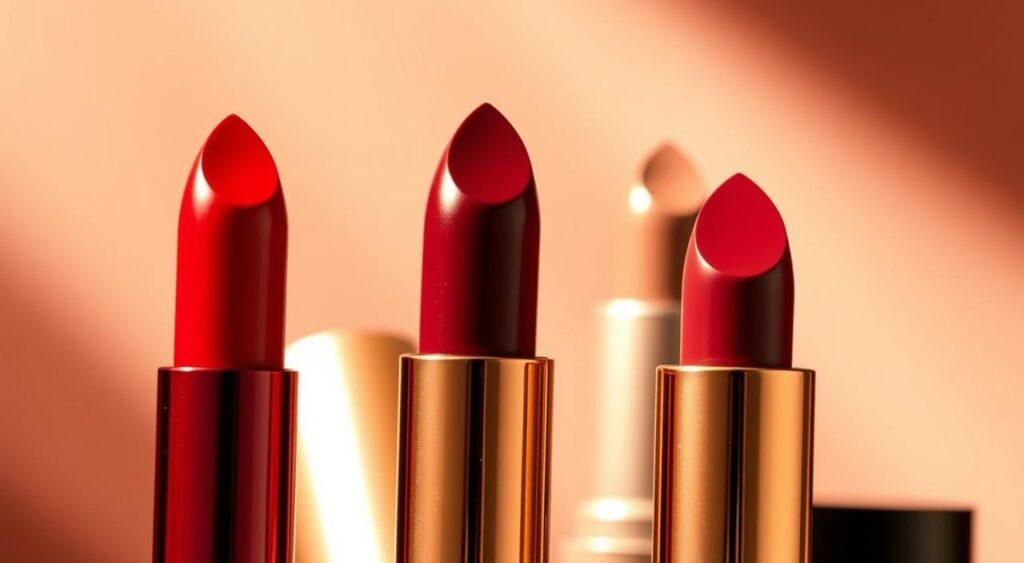
What drives someone to choose a specific shade or cosmetic item during stressful times? This choice reveals how emotional needs shape spending when logic suggests austerity. At its core, it’s about balancing practicality with the human desire to feel grounded.
Psychological Drivers Behind the Lipstick Effect
The lipstick effect comes from deep psychological needs that show up when things are uncertain. It’s a key way to understand why people buy certain things. When tough times hit, people look for small ways to feel powerful again.
A 2019 study in the Journal of Consumer Psychology found that 63% of women see beauty products as tools to boost confidence when stressed. Picking a bold lip color or a new skincare product is more than just looking good. It’s a way to hold onto one’s sense of self.
This behavior also shows how we signal to others. For instance, red lipstick, linked to strength and individuality, quietly shows resilience. During the 2020 lockdowns, sales of bright lip shades went up 22%, even though they were hidden by masks. People used these products for private moments of empowerment.
By using the lipstick mental model, we see how small rituals can be lifesavers. They help us face emotional challenges with purpose. What small habit helps you feel in control when things are uncertain?
Behavioral Economics and Emotional Spending
Studies show people prioritize small purchases that offer control during uncertainty. A $10 cosmetic becomes more than a product—it’s a ritual. Netflix thrived during recessions by offering affordable escapes, while Dollar General expanded by meeting both practical and emotional needs.
Women often lead this trend. Research reveals 63% view beauty routines as tools for maintaining confidence when life feels unstable. These choices aren’t random—they’re calculated acts of self-preservation.
The Psychology of Indulgence in Tough Times
Even the shape of a cosmetic item can reflect personality. A rounded tip might signal approachability, while angular edges suggest precision. These subtle choices help people express individuality when bigger forms of self-expression feel risky.
| Shape | Personality Trait | Psychological Need |
|---|---|---|
| Flat Top | Practical | Control |
| Rounded | Friendly | Connection |
| Sharp Edge | Decisive | Confidence |
During the 2020 lockdowns, sales of bold lip colors rose 22% despite mask mandates. Why? Applying it became a private act of defiance—a way to reclaim agency. This pattern mirrors how people use small rituals to combat helplessness.
What daily choice helps you maintain your sense of self when pressures mount?
Cultural and Social Implications of Beauty Trends
How does a single cosmetic choice ripple across centuries and continents? The story of red lips reveals how personal style becomes a mirror for societal values. From ancient royalty to modern protests, this bold shade carries weight far beyond its pigment.
Red Lipstick as a Symbol of Empowerment
In 1912, suffragettes wore crimson lips while demanding voting rights—a visible act of rebellion. Decades later, activists revived the tradition during #MeToo marches. Marilyn Monroe’s iconic look symbolized Hollywood glamour, while Rihanna’s Fenty line redefined inclusive beauty standards.
This color transcends vanity. Factory workers during WWII applied it as daily armor. Today, politicians like Alexandria Ocasio-Cortez use it to challenge stereotypes. Each swipe declares: “I exist unapologetically.”
Self-Expression and Shifting Beauty Standards
Global meanings vary widely. In Japan, red lips historically signaled married status. Western cultures link them to romance or power. Yet everywhere, they spark conversations about identity.
Modern brands now celebrate diverse skin tones. A 2021 study found 68% of Gen Z buyers choose shades reflecting their values—like sustainability or inclusivity. Beauty becomes a language, with lips as the punctuation mark.
What small choice in your appearance speaks volumes about who you are?
Business Strategies Capitalizing on the Lipstick Effect
How do savvy companies turn economic uncertainty into opportunity? By recognizing that small comforts become lifelines when budgets tighten. Forward-thinking brands design offerings that blend affordability with emotional resonance—a strategy proven across industries.
Case Examples: Affordable Escapes & Essentials
Netflix thrived during the 2008 crisis by positioning itself as a low-cost escape. Dollar General expanded by stocking both pantry staples and $5 beauty items. Cosmetic brands like Revlon leaned into bold shades linked to confidence—a tactic rooted in studies showing women prioritize products perceived to boost attraction during financial stress.
Research reveals an intriguing pattern: recessions amplify the desire for items signaling resourcefulness. One study found women preferred quality cosmetics over discount alternatives when economic cues surfaced. Why? Premium products subtly communicate capability—a survival mechanism disguised as self-care.
Lipstick Mental Model: Adapting Marketing for Shifting Priorities
Successful campaigns during downturns emphasize emotional utility over pure function. L’Oréal’s “Because You’re Worth It” slogan gained traction by framing purchases as acts of empowerment. Brands now bundle products into “mini luxury” kits or highlight multi-use benefits—like a lip color doubling as blush.
These strategies work because they honor our need for dignity amid struggle. What small offering could your business reframe as an anchor of resilience today?
Applying the Lipstick Mental Model in Everyday Life
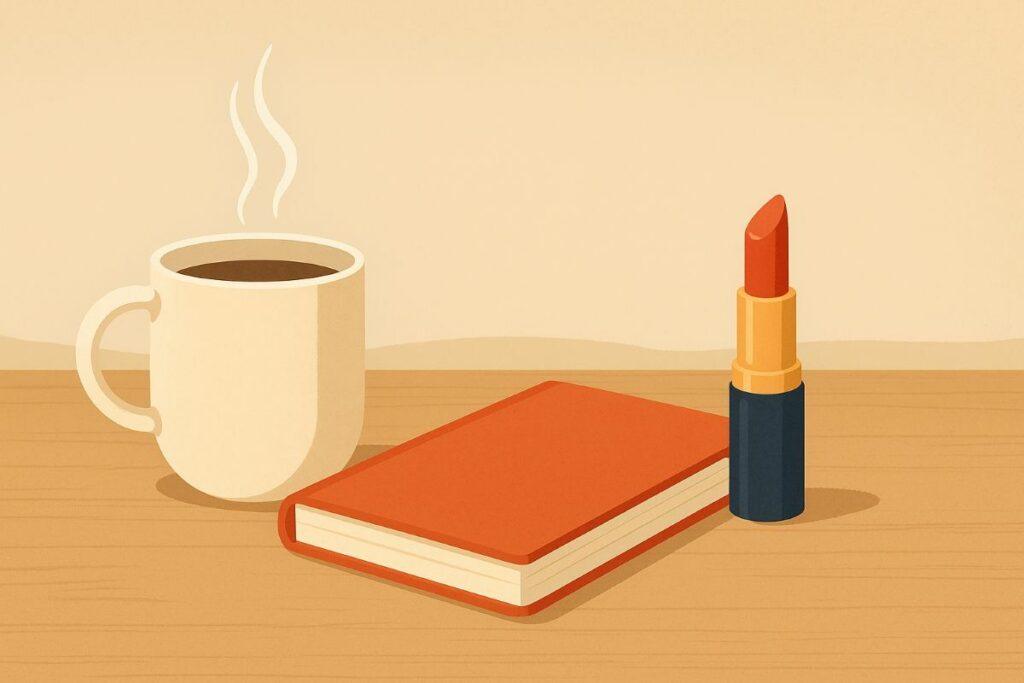
The lipstick mental model teaches us about managing money and feeling good during hard times. It shows why we often want small treats. By choosing wisely, we can find happiness and stay responsible.
For instance, instead of buying a $15 candle on impulse, pick a skincare product. It’s a daily ritual that lifts your mood and is practical. A 2021 survey found 68% of people felt better when they bought affordable self-care items during tough times.
This model also helps us see spending as a way to build strength. In the 2008 recession, people bought low-cost items like nail polish or streaming services. These gave them big emotional benefits.
To use this model, pick one or two small things that make you happy but don’t break the bank. Maybe it’s your favorite tea or a journal. See how these choices affect your mood over time.
By spending on what makes you feel good, you can create lasting habits. What small treat could you get today to boost your confidence?
Conclusion
The lipstick mental model shows a key truth about human strength: we find small ways to care for our souls, even when things are hard. During the Great Depression, people bought more makeup. In 2020, more folks made their own skincare. These actions show how small pleasures, like a bold lip color or a new haircut, give us comfort.
Behavioral economics explains these choices. They help us feel in control and confident. Whether it’s ancient red lip color or today’s bold shades, these choices are more than just fun. They’re our way of saying no to uncertainty.
Understanding this model helps us spend wisely without feeling guilty. Instead of seeing small treats as wasteful, see them as ways to keep going. Companies like L’Oréal and Netflix know this, making affordable escapes that touch our hearts.
When you choose a small luxury, think about how it boosts your resilience. The lipstick mental model teaches us that even tiny acts of self-care can guide us through tough times. It shows that hope can be found in a $10 item.
